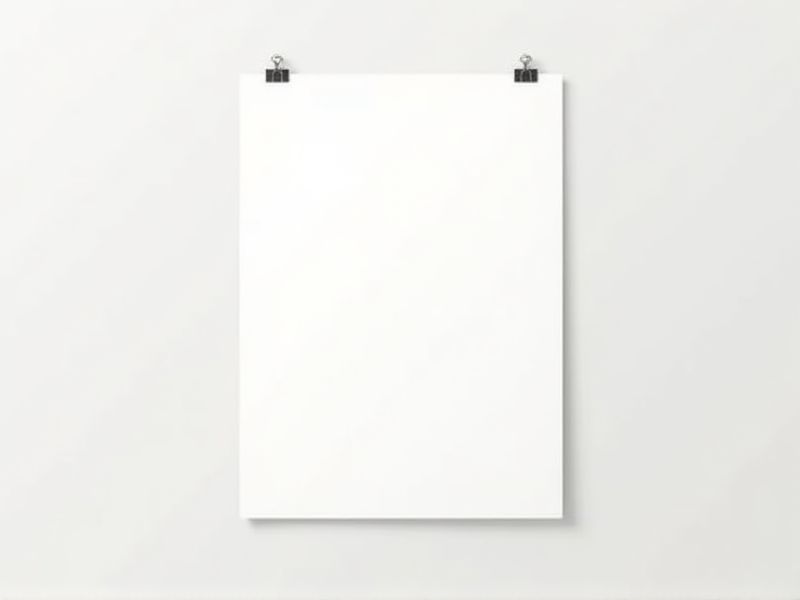
Paper sheets come in various standard sizes to suit different needs and industries. For example, the most commonly used size in the United States is "Letter," which measures 8.5 x 11 inches (216 x 279 mm). In most other countries, the "A4" size is standard, measuring 210 x 297 mm (8.27 x 11.69 inches). Knowing these standard dimensions can help you select the appropriate paper for printing, filing, and other office tasks.
Iso 216
ISO 216 is the international standard defining the dimensions of paper sheets, primarily through the A and B series sizes. The most recognized size, A4, measures 210 x 297 millimeters, making it widely used for letters and documents globally. The A series allows for an easy scaling system, where each size is half of the previous one when folded along its longest edge. Understanding ISO 216 can enhance your printing and document management efficiency by ensuring your materials are compatible with standard sizes.
A Series (A4)
The A4 paper size measures 210 mm by 297 mm, making it one of the most commonly used formats for documents, letters, and reports in various industries. This standardized size is part of the ISO 216 international paper size classification, which enhances compatibility and efficiency in printing and document handling. A4 paper typically has a weight range of 70-100 grams per square meter (gsm), providing options for everything from everyday printing to high-quality presentations. Whether you are printing school assignments or professional contracts, A4 paper ensures that your materials meet industry standards and expectations.
B Series
The B series of paper sizes, standardized by ISO 216, is designed primarily for poster production and displays, offering a unique aspect ratio that allows for effective scaling. This series ranges from B0, measuring approximately 1000 x 1414 mm, down to B10, which measures about 31 x 44 mm. Notably, B sizes provide a solution for larger printed materials, ensuring readability and visual appeal without excessive bleed or cropping. If you're involved in design or printing, understanding the B series can enhance your project outcomes, allowing for precision in layout and presentation.
C Series
The C series paper size standard, defined by ISO 216, emphasizes a unique aspect ratio of 1:2, making it ideal for various applications, ranging from envelopes to business cards. For example, C4 measures 229 x 324 mm, perfect for flat documents, while C5 at 162 x 229 mm fits A4 sheets folded in half. This consistent scaling ensures that if you resize one C series sheet, it maintains proportional dimensions across all sizes, enhancing versatility and usability. The C series also benefits industries by providing a streamlined system for printing, mailing, and storage.
Letter Size
The Letter size paper sheet measures 8.5 inches by 11 inches, making it a popular choice for both personal and professional documents in the United States. This size is ideal for various applications, such as printing reports, letters, and presentations. Typically made from wood pulp, Letter size paper often has a weight range of 20 to 24 pounds, influencing its quality and durability. When choosing paper for your printing needs, consider brightness levels, which can range from 85 to 100, as higher brightness enhances text clarity and color vibrancy.
Legal Size
The legal size paper sheet measures 8.5 inches by 14 inches, making it a popular choice for legal documents and contracts. This format provides ample space for text, diagrams, and tables, enhancing readability and organization. Many businesses and law offices maintain a stock of legal-sized sheets, optimizing workflow and ensuring compliance with industry standards. When printing on legal-size paper, your document layout is crucial for maintaining a professional appearance.
Executive Size
The Executive size paper sheet measures 7.25 x 10.5 inches, making it an ideal choice for professional documents and presentations. This format is especially popular in corporate environments for creating reports, proposals, and resumes. With a weight of 20 to 24 lb, Executive paper ensures durability while maintaining a high-quality feel. You can easily find this size available in various finishes, including matte and glossy, to suit your specific printing needs.
Tabloid Size
The Tabloid paper size measures 11 x 17 inches, which is equivalent to 279.4 x 431.8 millimeters. This format is often used for newspapers, magazines, and various promotional materials due to its large surface area, allowing for vibrant imagery and comprehensive layouts. Tabloid sheets can be printed on both sides, providing an effective way to convey more information to your audience. Understanding these dimensions and uses can enhance your design choices for effective communication.
Ra And Sra Sizes
RA (Raw Area) and SRA (Supplementary Raw Area) paper sizes are crucial in the printing and design industry, offering flexibility and efficiency. RA dimensions, typically at 200 mm x 290 mm, allow for easy scaling and trimming, making it ideal for various print projects. SRA sizes, which measure 320 mm x 450 mm, provide a margin for bleed, ensuring no critical design elements are lost during cutting. Understanding these standards allows you to choose the right paper format for your specific needs, enhancing the quality of your printed materials.
Aspect Ratio Of √2
The standard paper sizes, such as A4 and A5, conform to the Aspect Ratio of 2, which is approximately 1:1.414. This unique ratio allows each size to be proportionally reduced or enlarged while maintaining the same aspect ratio, facilitating efficient scaling for various applications. For example, when you halve an A4 sheet, the resulting A5 maintains the same proportions, making it ideal for booklets and flyers. This consistency in dimensions across all sizes enhances usability and minimizes waste in printing and production processes.
